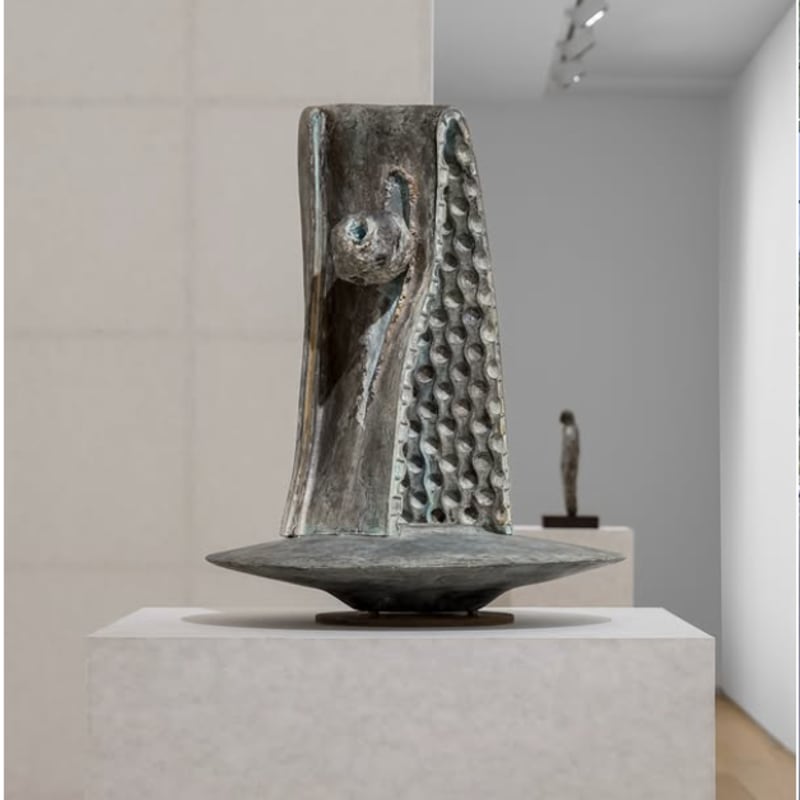How the Artist Liza Lou ‘Messes With Your Mind’ Liza Lou's 'Trailer' at the Brooklyn Museum
A gun, a bottle of Jack Daniels, a splatter, a million beads. With these details, the California artist Liza Lou tells you stories. And just a minuscule bead, she explains, is like an underlined word: it can focus your attention, and slow you down.
“Beads highlight what is ordinary and make you look at it,” said Lou, known for her life-size beaded sculptural installations, including “Kitchen” (1991-96), in the collection of the Whitney Museum, and “Back Yard,” acquired in 2002 by the Fondation Cartier. She was speaking recently in front of “Trailer,” another massive construction, originally made 25 years ago and filled with tens of millions of Czech glass beads. It just arrived at the Brooklyn Museum.
Lou, 55, has reached a turning point in her career, as she transitions from the objects that put her on the map — the Museum of Modern Art recently acquired a beaded teacup and saucer — into more abstract work, all created with her favorite material, which she called “tiny messengers of pigment, dot size expressions of joy.”
Carmen Hermo, a curator who worked on the “Trailer” installation, said, “There is a tenderness to the attention that Liza pays” to every detail and bead placement. The meticulousness of works like “Trailer,” she added, “just kind of messes with your mind. There’s something so everyday but also very uncanny about it.”
Lou, a feminist artist and art school dropout who received a MacArthur Foundation (“genius”) grant in 2002, started her career thinking big and small simultaneously, with “Kitchen,” a full-scale replica — down to the dishes in the sink; an actual refrigerator; a box of Frosted Flakes — composed of perhaps 30 million cylindrical beads, according to one estimate. She created it entirely solo, beginning in 1991; it took five years to complete.
It was followed by “Back Yard” and then by “Trailer,” the final piece of what she sometimes thinks of as an Americana trilogy. It asks questions about whose labor is valued, and how; about self-sufficiency and isolation; about gender and power. It is also winningly flecked with humor, rewarding close observation.


















































































































































































